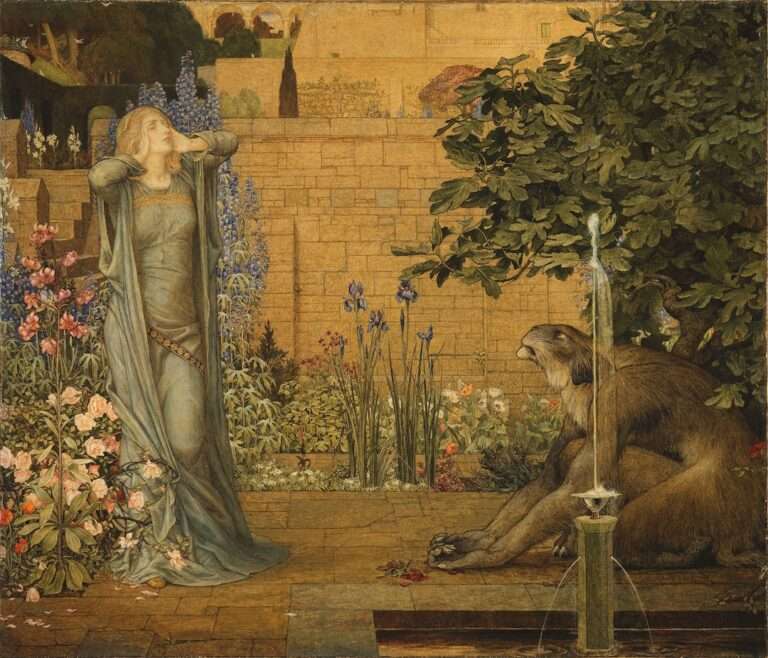Exploring Symbolism in History and Mythology

Color is an integral part of human perception and culture. It has the power to evoke emotions, convey meaning, and shape our understanding of the world around us. From the vibrant hues of nature to the pigments used in art and design, color plays a significant role in our daily lives. This article will explore the importance of color in human perception and culture, examining its impact throughout history, its role in ancient mythology and religion, its symbolism in different cultures, its evolution in art and literature, its influence on emotions and psychology, its significance in fashion and design, its power in advertising and marketing, its use in political and social movements, the science behind color perception in the brain, and its intersection with race and identity.
How Color Has Shaped Human Perception Throughout History
The evolution of color perception in humans can be traced back to our early ancestors. As primates, our ancestors relied on color vision to navigate their environment and identify ripe fruits and potential threats. Over time, our ability to perceive color evolved, allowing us to distinguish a wider range of hues and shades. This enhanced color perception had a profound impact on early civilizations.
Color played a crucial role in the lives of ancient civilizations. In ancient Egypt, for example, color was associated with different gods and had symbolic meanings. The use of vibrant colors in Egyptian art reflected their belief in an afterlife filled with beauty and abundance. Similarly, ancient Greek and Roman civilizations used color to convey social status and power. Purple dye was reserved for royalty, while red was associated with war and strength.
Throughout history, color has also played a significant role in art and literature. Artists have used color to evoke emotions, create depth and perspective, and convey meaning. From the Renaissance period to the Impressionist movement, artists have experimented with different color palettes to capture the essence of their subjects. In literature, authors have used color symbolism to enhance their storytelling. For example, the color green is often associated with envy or jealousy, while red can symbolize passion or danger.
The Role of Color in Ancient Mythology and Religion
Color holds great significance in ancient mythology and religion. Different cultures assigned specific meanings to colors, associating them with gods, rituals, and spiritual beliefs. In ancient Egypt, for instance, the color blue represented the heavens and the Nile River, while green symbolized fertility and rebirth. In Hinduism, the color red is associated with power and passion, while yellow represents knowledge and learning.
Color symbolism can also be found in ancient mythologies. In Greek mythology, for example, the color white was associated with purity and innocence, while black represented death and darkness. The Norse mythology associated the color gold with wealth and prosperity, while silver symbolized the moon and femininity.
The Symbolism of Primary Colors in Different Cultures
Primary colors hold different meanings in various cultures around the world. Red, for instance, is often associated with love and passion in Western cultures, while it symbolizes luck and prosperity in Chinese culture. Blue is often associated with calmness and tranquility in Western cultures, while it represents spirituality and protection in Native American cultures. Yellow is often associated with happiness and joy in many cultures, while it symbolizes mourning in some African cultures.
Color symbolism varies across cultures due to historical, social, and cultural factors. The meanings assigned to colors are influenced by cultural traditions, religious beliefs, and societal norms. It is important to consider these cultural differences when interpreting color symbolism.
The Evolution of Color Meanings in Art and Literature
Color meanings have evolved over time in art and literature. The interpretation of colors is influenced by cultural and historical context. For example, during the Renaissance period, blue was associated with the Virgin Mary and represented purity and divinity. In contrast, during the Romantic period, blue came to symbolize melancholy and introspection.
Similarly, the meaning of colors in literature has changed over time. In Shakespeare’s plays, for instance, the color green was often associated with jealousy and deceit. In modern literature, green can represent environmentalism or growth.
Cultural and historical context play a significant role in shaping color symbolism in art and literature. The meanings assigned to colors are not fixed but are subject to change based on societal shifts and cultural trends.
The Influence of Color on Emotions and Psychology

Color has a profound impact on human emotions and psychology. Different colors can evoke different emotional responses and influence our mood and behavior. For example, warm colors like red and orange are often associated with energy and excitement, while cool colors like blue and green are associated with calmness and relaxation.
The psychological effects of color can be used strategically to influence mood and behavior. In interior design, for instance, warm colors may be used in restaurants to stimulate appetite, while cool colors may be used in hospitals to create a calming environment. Similarly, in marketing and advertising, color is often used to evoke specific emotions and create brand associations.
The Cultural Significance of Color in Fashion and Design
Color plays a crucial role in fashion and design. It is used to express personal style, convey cultural identity, and reflect societal values. Different cultures have different color preferences and associations. For example, in Western cultures, white is often associated with purity and weddings, while in some Asian cultures, white is associated with mourning.
Color trends in fashion often reflect cultural values and attitudes. For example, during times of economic uncertainty, darker colors may be more prevalent, while during periods of optimism, brighter colors may be in fashion. Color choices in design also reflect cultural preferences and aesthetics.
The Power of Color in Advertising and Marketing
Color is a powerful tool in advertising and marketing. It can influence consumer behavior, create brand associations, and enhance brand recognition. Different colors evoke different emotions and can be used strategically to convey specific messages.
For example, red is often used to create a sense of urgency or excitement, while blue is associated with trust and reliability. Yellow is often used to grab attention and convey a sense of optimism. The use of color in logos and branding can help differentiate a brand from its competitors and create a strong visual identity.
The Use of Color in Political and Social Movements
Color holds great significance in political and social movements. Different colors are used to symbolize different causes and ideologies. For example, the suffragette movement in the early 20th century used purple, white, and green to represent loyalty, purity, and hope. The LGBTQ+ rights movement uses the rainbow flag to symbolize diversity and inclusivity.
Color symbolism in political and social movements can be a powerful tool for mobilizing supporters and creating a sense of unity. It allows individuals to visually identify with a cause and express their support.
The Science of Color and Its Effect on the Human Brain
The perception of color is a complex process that involves the interaction between light, the human eye, and the brain. Different wavelengths of light are perceived as different colors by the human eye. These colors are then processed by the brain, which assigns meaning and emotional responses to them.
Research has shown that color can affect cognitive function and decision-making. For example, studies have found that exposure to the color red can increase attention to detail and improve performance on tasks requiring accuracy. Similarly, exposure to the color blue has been found to enhance creativity and problem-solving abilities.
Exploring the Intersection of Color, Race, and Identity
Color is closely intertwined with race and identity. The color of one’s skin has historically been used as a basis for discrimination and prejudice. Colorism, or the preference for lighter skin tones, is prevalent in many cultures and can have a significant impact on individuals’ self-esteem and social opportunities.
Color can also be used as a means of expressing and reinforcing cultural identity. For example, in African cultures, vibrant colors and patterns are often used in traditional clothing to celebrate cultural heritage and express pride in one’s roots.
Color is a powerful force that shapes our perception and understanding of the world. It has played a significant role throughout history, influencing early civilizations, art, literature, mythology, religion, fashion, design, advertising, marketing, politics, and social movements. Color has the ability to evoke emotions, convey meaning, and create a sense of identity. Understanding the significance of color in human perception and culture allows us to appreciate its power and harness it for positive impact in our lives.
If you’re fascinated by the symbolism of color, you might also be interested in exploring the symbolism of the moon. In many cultures and mythologies, the moon holds great significance and represents various concepts such as femininity, intuition, and cycles of life. To delve deeper into this topic, check out this intriguing article on the symbolism of the moon. Discover how this celestial body has influenced art, literature, and spiritual beliefs throughout history.
FAQs
What is color symbolism?
Color symbolism is the use of colors to represent ideas, emotions, and concepts in various cultures, religions, and mythologies.
What are some common color associations in history and mythology?
Red is often associated with passion, love, and anger. Blue is associated with calmness, trust, and wisdom. Green is associated with growth, fertility, and nature. Yellow is associated with happiness, joy, and enlightenment. Black is associated with death, mourning, and mystery. White is associated with purity, innocence, and peace.
How has color symbolism been used in different cultures?
Color symbolism has been used in various cultures throughout history. For example, in ancient Egypt, blue was associated with the Nile River and the sky, while red was associated with the god Set and chaos. In Hinduism, the color red is associated with the goddess Durga, while in Buddhism, yellow is associated with the Buddha.
What are some examples of color symbolism in literature?
In “The Great Gatsby,” the color green is used to represent wealth and envy. In “The Scarlet Letter,” the color red is used to represent sin and passion. In “The Catcher in the Rye,” the color red is used to represent innocence and purity.
How has color symbolism evolved over time?
Color symbolism has evolved over time as cultures and societies have changed. For example, in ancient Rome, purple was associated with royalty and power, while in modern times, purple is often associated with creativity and individuality. Additionally, the meanings of colors can vary depending on the context in which they are used.





